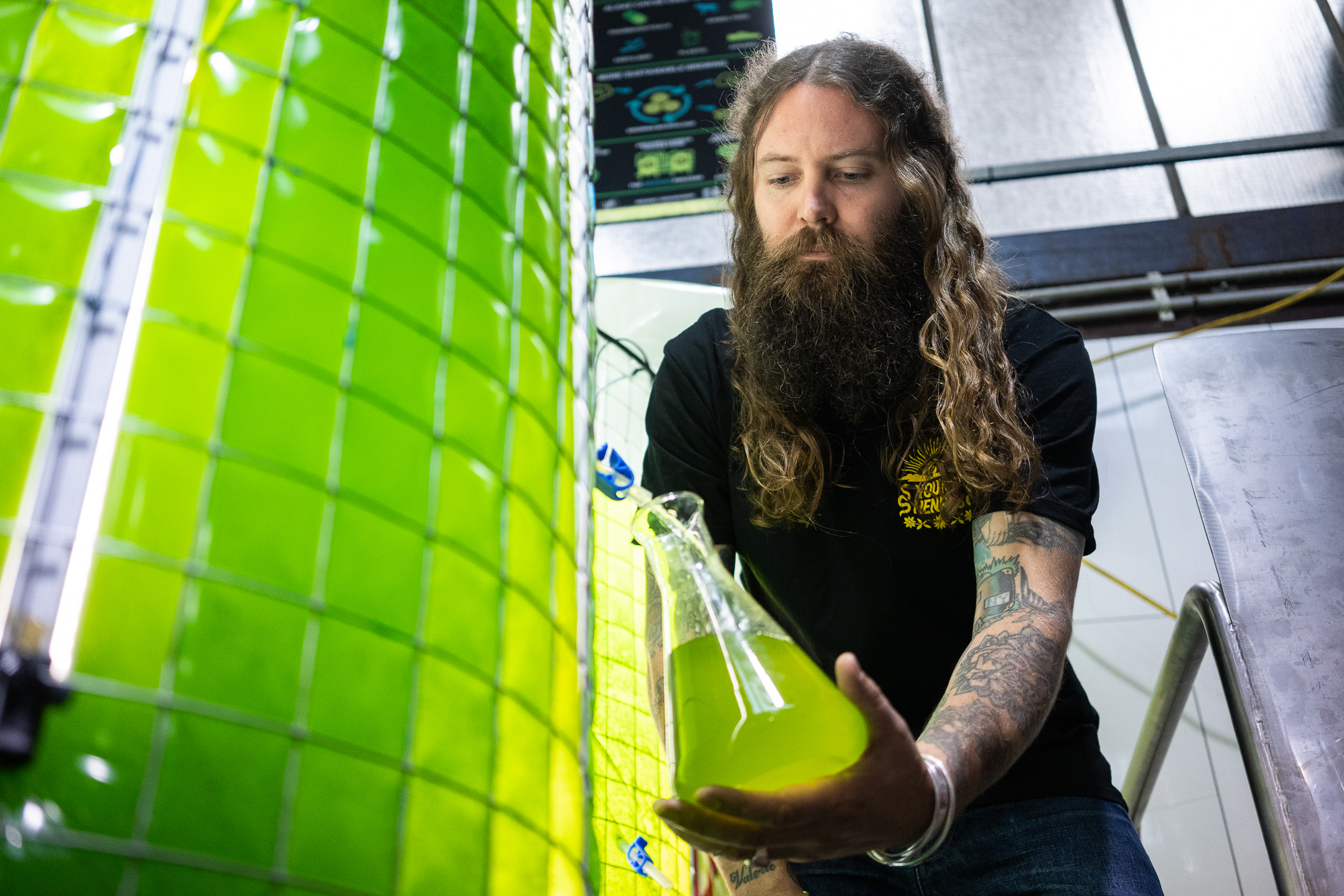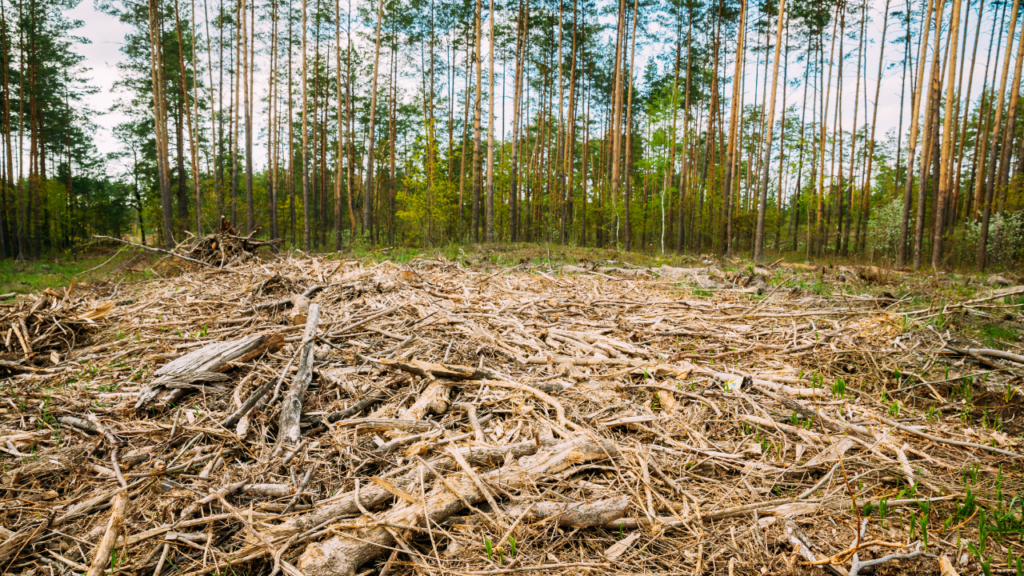When a few mates started a brewery in Sydney’s Inner West back in 2012, they had no idea that eight years later it would become home to a 400 litre micro-algae bioreactor that glows fluro green and sucks carbon dioxide from the air.
“We sometimes pinch ourselves and think ‘wow, how did we end up here?’” said Richard Adamson, one of the three co-owners of the Young Henrys Brewery in Newtown, Sydney.
Brewing beer isn’t the first culprit that comes to mind when you think of carbon dioxide emitters. And while the process isn’t a huge contributor to Australia’s overall greenhouse gas emissions, the team at Young Henrys are showing what true local legends look like when it comes to taking climate action.
“We just took the position that as leaders in our industry, we’ve got to show that leadership. For us, it was a matter of thinking ‘well, we can’t wait for someone else to come up with the solutions.’”
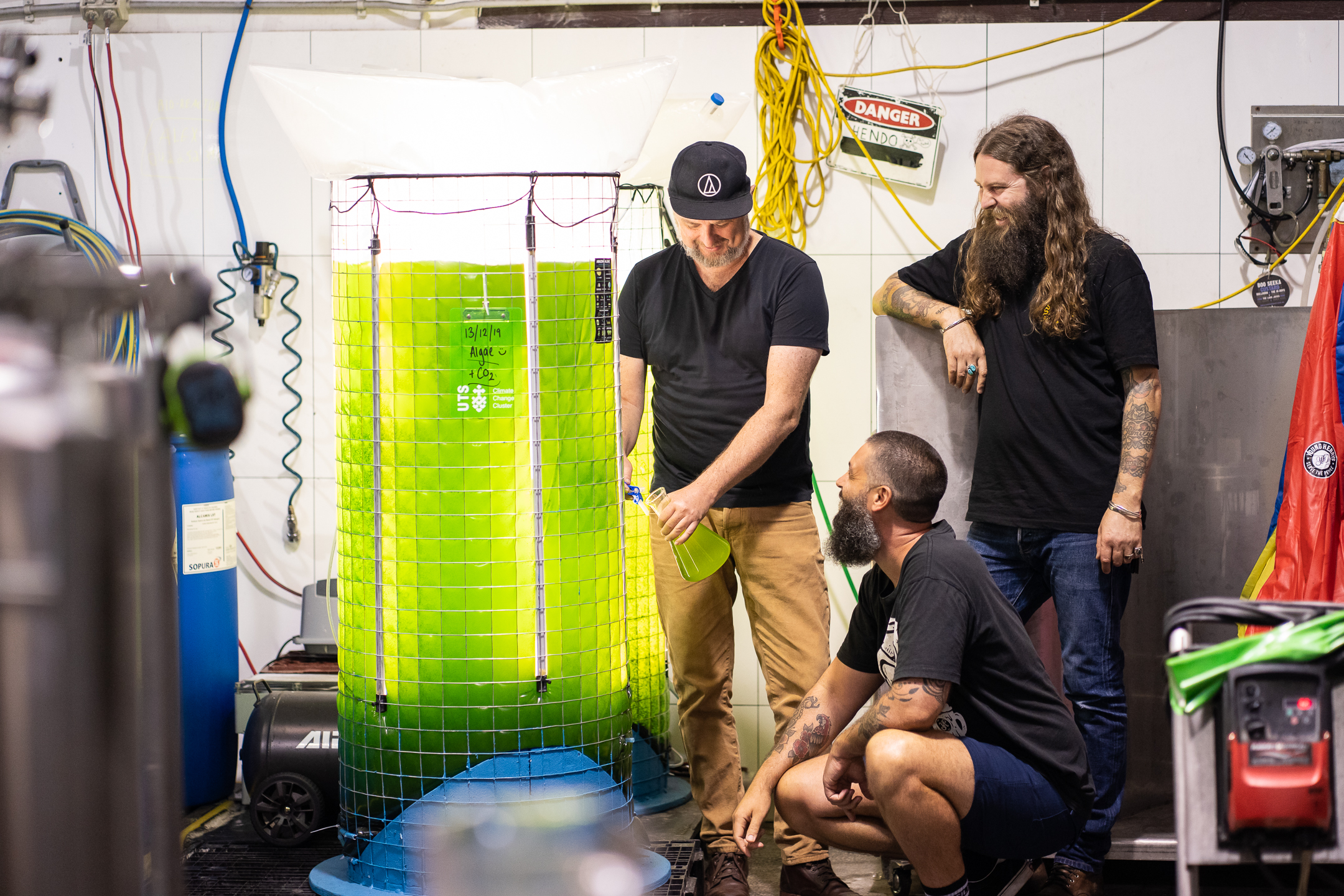
The Young Henrys co-owners with the 400L microalgae bioreactor. From left: Richard Adamson, Dan Hampton and Oscar McMahon. Image credit: supplied/Yeah Rad
Climate conscious beginnings
Richard Adamson, Oscar McMahon and Dan Hampton have been conscious of their environmental impact ever since they launched the brewery.
They started with returnable bottles to reduce waste, then settled on cans “as the best packaging option due to their high recyclability factor and low weight for transport,” said Adamson.
From there, they worked with a community solar farm and had solar panels installed on their roof, which are owned by the community. “It ends up costing us less, and the community gets a return from the investment, as well as reducing our greenhouse gas emissions on that front,” said Adamson.
But it wasn’t until they met the scientists from the University of Technology Sydney Climate Change Cluster (C3), that their sights became set on algae.
Is algae the solution?
Algae is a powerful climate solution as it is extremely effective at converting carbon dioxide into oxygen. Carbon dioxide is greenhouse gas, and too much of it is being released into the atmosphere, which is driving climate change.
Wondering what is climate change, and what can we do about it? Click here.
Interestingly for the team at Young Henrys, yeast — which is the primary ingredient in beer — has an almost inverse relationship with algae, which is what provided the initial sparks of inspiration in terms of reducing their brewery’s carbon emissions.
Yeast converts sugar into alcohol and carbon dioxide, while algae take carbon dioxide and sunlight, and produce sugar and oxygen.
“So we thought, if we can work these two things together, we could have a net — or maybe even net-negative — impact, in terms of actually reducing CO2 [carbon dioxide] emissions,” said Adamson.
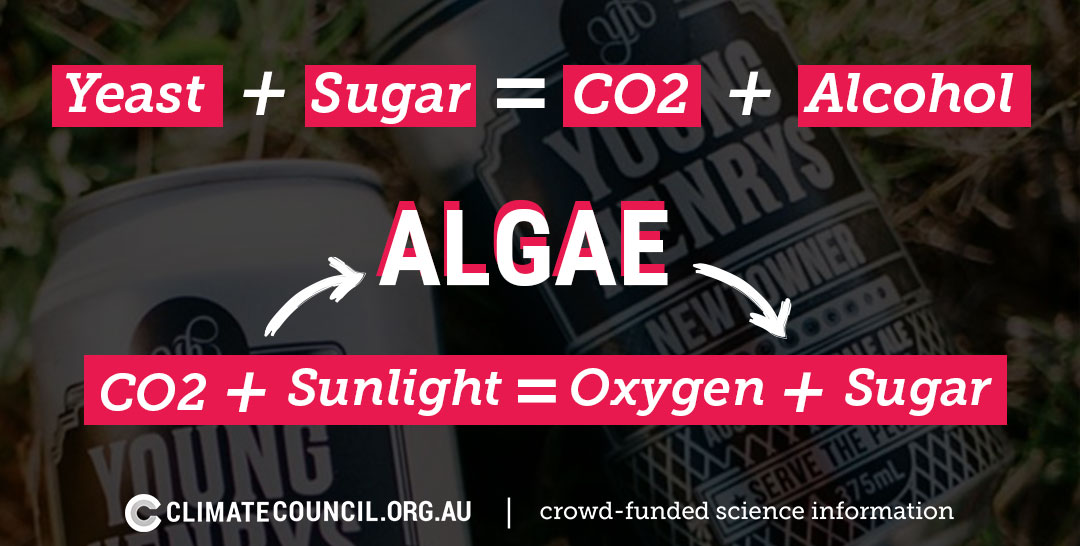
The inverse relationship between yeast — one of the main ingredients in beer — and algae is what forms the basis of the algae experiment.
In a partnership with the C3 group, the team at Young Henrys has set up two 400 litre bioreactors in the brewery, to apply the reverse relationship logic and counteract the emissions of the brewing process.
Each bioreactor takes up about a metre squared of space, yet produces the same amount of oxygen as one hectare of Australian bush, according to the C3 team. So the small reactor punches well above its size.
The life of the algae grown in the Young Henrys bioreactors doesn’t end there – the C3 group take it back to the lab and use it in a whole bunch of other applications, including the production of pharmaceuticals.
“In terms of numbers, the emissions reductions aren’t hugely significant but it’s really going to be about the application of the algae and how we can scale it up in the urban environment. That’s where we’ll really start to see the impact.”
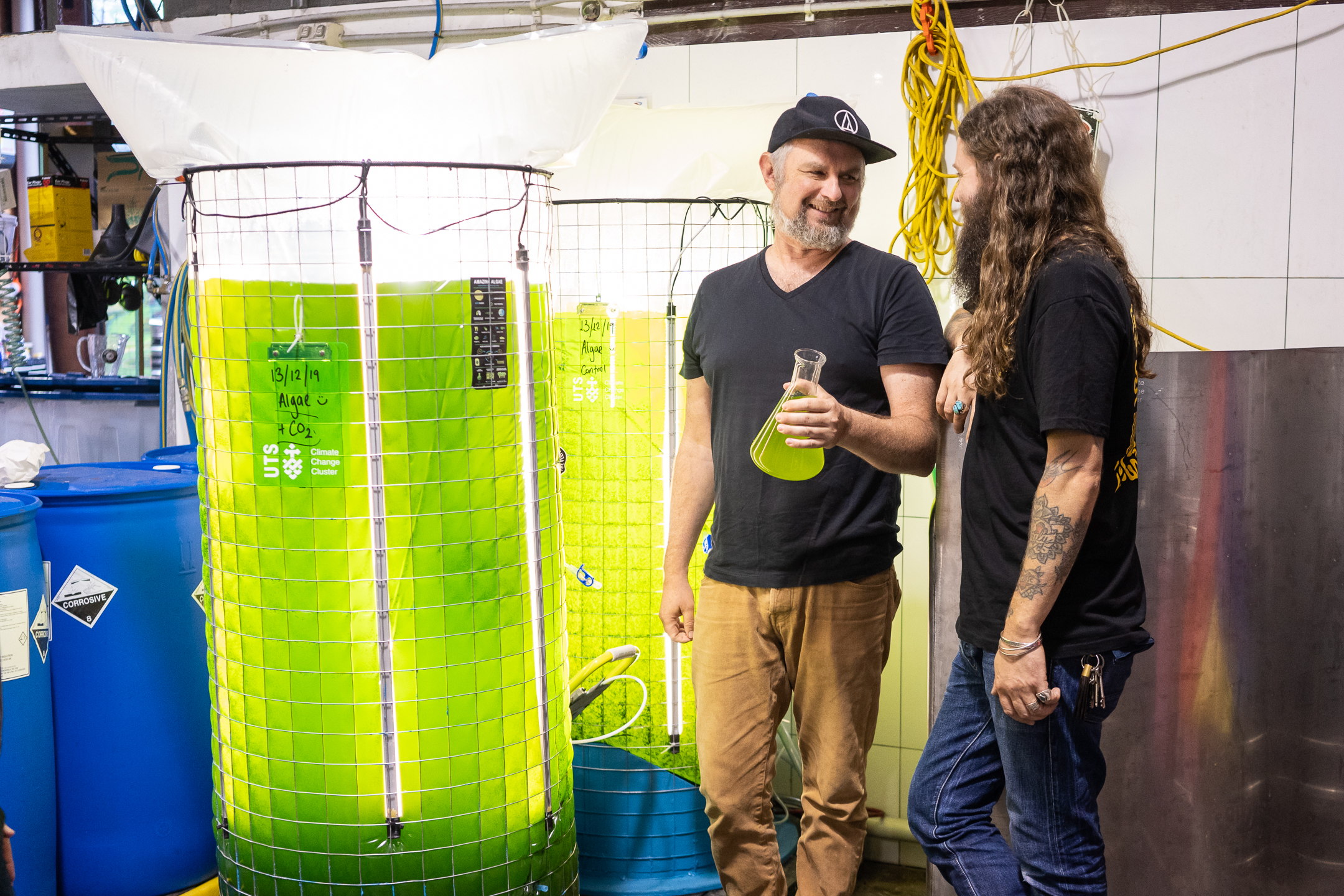
Richard Adamson says ‘there are huge economic opportunities in reducing emissions’ in Australia. Image credit: supplied/Yeah Rad.
Looking ahead
Like many other Australian companies and entrepreneurs, the Young Henrys team have realised that there are great economic opportunities in developing, implementing and marketing climate solutions.
They are looking into ways to package the project up to make it commercially viable for other breweries — or any producers of fugitive carbon dioxide emissions in general — to reduce their emissions. There’s also the potential for a commercial avenue for the algae after it’s grown, but this is all a few years down the track.
Across the board, the Young Henrys Team are taking action on climate change into their own hands, despite a lack of action from some political bodies.
“I think in Australia there’s a bit of fear around the economic impacts,” Adamson explained. “But with those challenges come massive opportunities. We’re pretty well placed as a nation to take advantage of a low carbon economy, especially with our access to solar.
“There are huge economic opportunities in reducing emissions.”

